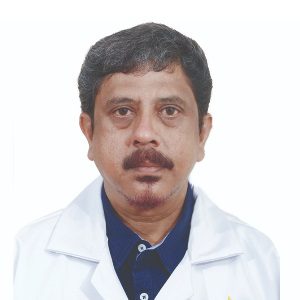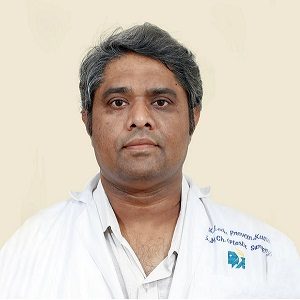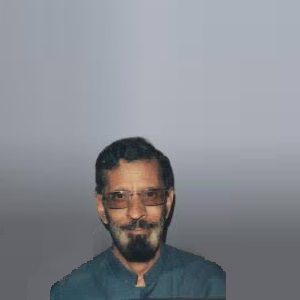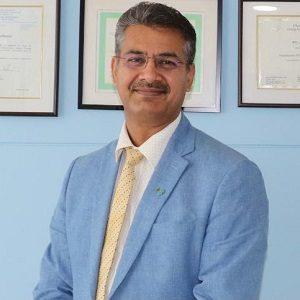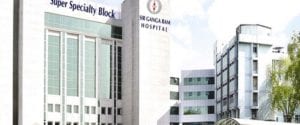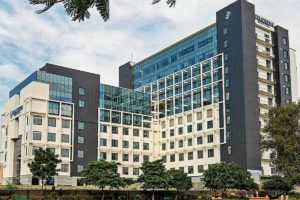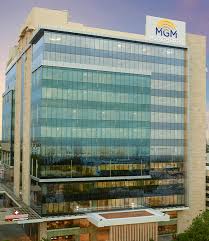Best Doctors in India for Breast Reconstruction Surgery
- Plastic Surgeon and Cosmetic Surgeon, Chennai, India
- Over 14 years’ experience
Profile Highlights:
- Dr. Kannan Prema is a bright young cosmetic surgeon in Chennai, working on aesthetics.
- With over 14 years of experience as a board-certified cosmetic surgeon, Dr. Kannan Prema is the ideal choice.
- She provides surgical treatments like breast reduction, Rhinoplasty, removal of skin tags, buttock liposuction, etc.
- Plastic Surgeon and Cosmetic Surgeon, Chennai, India
- Over 16 years’ experience
Profile Highlights:
- Dr. Kumaresan M N is one of the finest Cosmetic Surgeons in Chennai with nearly 16 years of experience in the field.
- He ensures the best aesthetics for his patients.
- The Tamil Nadu Medical Council has had him as a member since 1992.
- Plastic Surgeon and Cosmetic Surgeon, Chennai, India
- Over 22 years’ experience
Profile Highlights:
- Dr. Leela Praveen Kumar is one of the top Plastic Surgeons in Chennai with more than 22 years of dedicated experience.
- The doctor is frequently visited by the patients for Breast implants, Vaser Liposuction, rhinoplasty, facelift, Breast Reduction, Bariatric Surgery, Microsurgery, Body contouring, Hand surgery, and Onco Reconstruction.
- Dr. Leela Praveen Kumar also manages a non-Surgical fat reduction procedure, known as Cryolipolysis.
- Plastic Surgeon and Cosmetic Surgeon, Chennai, India
- Over 40 years’ experience
Profile Highlights:
- Dr. Sundararajan M S is one of the best Plastic Surgeons in India, having practiced for more than 40 years.
- The doctor offers lipo filling, body contouring, non-Surgical facelift, tummy tuck, implants, etc.
- Dr. Sundarajan bagged the Best paper award in 2008 & 2013 and the other Gold Medal for his contribution to the field.
- Plastic Surgeon, Cosmetic Surgeon, Gurugram, India
- Over 25 years’ experience
Profile Highlights:
- Dr. Aditya Aggarwal has been an eminent figure in the Department of Plastic, Aesthetic, and Reconstructive Surgery.
- Throughout his career, he has invested in microsurgical procedures of physical amputation across the globe.
- He has worked in India, Berlin, Taiwan, and Japan, and his bright career echoes from each corner of the world.
Best Hospitals in India for Breast Reconstruction Surgery
Narayana Superspeciality Hospital, Gurugram
- City: Gurugram, India
Hospital Highlights:
- Situated near DLF Cyber City, Gurugram, Narayana Superspecialty Hospital is one of the top medical facilities in the Delhi NCR region, catering to the needs of the people. Known for its commitment to quality medical care and patient service, the hospital is a state-of-the-art facility with planned and well-equipped sections, which includes a spacious OPD area as well as comfortable patient rooms.
- It is the closest super-specialty hospital from Indira Gandhi International Airport towards Gurugram, and also the nearest super specialty hospital from DLF Cyber City. It is also close to major residential areas in Gurugram.
- It is part of the renowned Narayana Health Group. Established in 2000, by Dr. Devi Shetty, a renowned cardiac surgeon, it has grown to be one fo India’s leading healthcare groups.
Sir Ganga Ram Hospital, New Delhi
- City: New Delhi, India
Hospital Highlights:
- Sir Ganga Ram Hospital, New Delhi is known to provide the latest medical procedures with the latest technology in all of its units.
- The hospital has a team of reputed doctors, nurses, and healthcare professionals that ensure that patients receive quality care at affordable costs.
- Staffed with a team of highly qualified doctors, dedicated nurses, and paramedical and non-medical staff, the hospital aims to lead in healthcare delivery, medical education, training, and research.
- As per the vision of the founder, the hospital also provides free treatment to the economically weaker sections of society.
- Sir Ganga Ram Hospital also provides training to young doctors under the Diplomate in National Board(DNB) program. The DNB program at the hospital was started in 1984 and it is known for currently running the maximum number of DNB specialties in the country. It also has the distinction of having the first bone bank in India.
KIMS Hospital, Hyderabad
- City: Hyderabad, India
Hospital Highlights:
- KIMS Hospital (a brand name of Krishna Institute of Medical Sciences) is one of the largest and best multi-speciality hospitals in Hyderabad. The hospital provides various treatments to an enormous number of patients.
- The hospital has a capacity of more than 3000 beds. KIMS Hospitals offers different healthcare services in more than 25 specialities and super specialities.
- The hospital is equipped with modern medical equipment and technology. It has robotic equipment to provide minimal invasive techniques for patients.
- The hospital is aimed at providing world-class healthcare facilities and services at an affordable cost for patients.
- The various specialities and departments of the hospital include neurosciences, gastroenterology & hepatology, robotic science, reproductive sciences, dental science, oncological sciences, organ transplantation, heart and lung transplantation and mother and child care.
Fortis Hospital, Shalimar Bagh
- City: New Delhi, India
Hospital Highlights:
- Fortis Hospital in Shalimar Bagh is a multi-super specialty hospital that strives to provide world-class patient care by leaving no stone unturned.
- Fortis, Shalimar Bagh, with 262 beds and a 7.34-acre footprint, provides the best level of medical care through its team of doctors, nurses, technicians, and management professionals.
Reliance Hospital, Mumbai
- City: Mumbai, India
Hospital Highlights:
- Reliance Hospital is one of the best super-specialty care hospitals in Navi Mumbai.
- The main purpose of this hospital is to become a trustworthy place for the best health and hope for society. The hospital is well connected to the suburbs of Mumbai and Navi Mumbai.
- The hospital has various specialty departments, viz., Accident & Emergency, Anesthesiology, Dental Services, Dermatology, Diabetology, Dietetics Nutrition, Endocrinology, ENT, Gastroenterology, General Surgery, Gynaecology And Obstetrics, Hepato Pancreato Biliary Surgery, Infectious Disease, Internal Medicine, Interventional Radiology, Laboratory Medicine, Minimal Access Laparoscopic Surgery, Nephrology, Neurosciences, Opthalmology, Orthopaedics, Paediatrics, Pain Management Palliative Care, Physical Medicine Rehabilitation, Plastic And Reconstructive Surgery, Psychiatry, Pulmonary Medicine, Radiology, Rheumatology, Transplant, Urology Andrology, Vascular Surgery
Lilavati Hospital & Research Centre, Mumbai
- City: Mumbai, India
Hospital Highlights:
- Lilavati Hospital & Research Centre is India’s premier multi-speciality tertiary care hospital and has been recognised as a global medical excellence centre.
- Lilavati Hospital & Research Centre has built an unrivalled level of trust with its patients over the years, thanks to a solid foundation that comprises cutting-edge facilities, the best medical competence, research, education, and charity endeavours.
- The hospital is quite proud of the fact that it now serves patients from all kinds of backgrounds, not just from the United States but from all around the world.
- The hospital has a total of 323 beds, one of the largest Intensive Care Units (ICUs), 12 Operation Theatres with modern amenities, over 300 consultants, and almost 1,800 personnel.
Venkateshwar Hospital, Dwarka, New Delhi
- City: New Delhi, India
Hospital Highlights:
- State-of-the-art technology and devoted healthcare professionals have been brought together under one roof at Venkateshwar Hospital to provide genuine medical care. The hospital’s professionals work together as a team to deliver the best possible treatment to their patients, using the most sophisticated equipment and information technology.
- Venkateshwar Hospital’s mission is to attain global excellence in healthcare by employing evidence-based, ethical clinical practices and cutting-edge technology by a team of highly skilled experts.
MGM Healthcare, Chennai
- City: Chennai, India
Hospital Highlights:
- Located in Chennai, India, MGM Healthcare is a top multispecialty hospital that provides all medical services under one roof.
- Since its founding in 2019, MGM Healthcare has quickly become a leading national referral centre, creating several innovative flagship initiatives.
- MGM Healthcare combines next-generation medical and digital technologies to provide better patient results.
- With 12 centres of excellence, more than 400 inpatient beds, 100 intensive care unit beds, and 24/7 emergency care, MGM Healthcare leaves no chance in redefining the patient experience in Chennai.
- MGM Healthcare boasts 250+ expert doctors across 30+ departments, including Cardiology, Pulmonology, Neurology, Obstetrics & Gynaecology, and more.
- They house 12 specialized Centres of Excellence, including Neurosciences, Orthopaedics, and Multi-Organ Transplantation.
- Their team of doctors, nurses, and paramedics works together to give every patient individualized treatment.
Breast Reconstruction Surgery
Women who undergo breast cancer surgery can choose breast reconstruction surgery for rebuilding the shape and look of their breast.
The procedure can be done several months or even years after going through surgery for breast cancer. Breast reconstruction can be of various types.
Purpose
Women consider breast reconstruction for various reasons:
- To make her chest look more balanced while she is wearing a bra or swimsuit.
- To help her clothes fit better.
- To regain her breast shape permanently.
- To feel better and more confident about her body.
Though this procedure often leaves scars, they can fade over time. There are newer techniques which have reduced the amount of scarring. While wearing a bra, a woman’s breasts should look alike in size and shape, helping her feel confident and comfortable in most types of clothing.
However, it is noteworthy that the reconstructed breast is generally not a perfect match or substitute for a natural breast.
If tissue from your back, tummy, or buttocks were used as part of your reconstruction procedure, then it is likely that those areas will look different after your surgery. It is important to talk to your surgeon about scars and changes in shape or contour.
Types
Breast reconstruction is generally of two types-
- Implants – Implants are generally made out of silicone or saline or sometimes a combination of both. They are generally placed underneath the chest muscle.
- Flaps- Flap procedures are performed by plastic and reconstructive surgeons specializing in microsurgery. During this procedure, a breast is created using tissue taken from other body parts. This can be your abdomen, back, thigh, or buttocks. The tissue is then transplanted to the chest by reconnecting the blood vessels to any new ones in your chest region.
Preparation
If you have decided to go for breast reconstruction, you need to consider several things, as you and your doctors talk about which kind of reconstruction is going to be best for you. Some factors you and your doctors need to think about while considering your options include:
- Your overall health
- Your breast size
- The location and size of your breast cancer
- Your breast cancer surgery (lumpectomy or mastectomy)
- Whether you had any other treatments other than surgery for your cancer
- The amount of tissue that is available
- Your insurance coverage
- Whether you want reconstructive surgery on one or both breasts
- How quickly you want to be able to recover from surgery
- How different types of reconstructive surgery might affect other body parts
- Whether you are willing to have more than one surgery as part of the reconstruction
Your surgeon will need to review your medical history as well as your overall health. Then he/she will decide and will explain which reconstructive options might be best for you based on your age, health, body type, as well as other factors.
You will need to discuss with your surgeon openly about your preferences. Be sure to voice any concerns if you have any.
Your breast surgeon and your plastic surgeon will likely give you instructions on how you can prepare for your surgery. It will probably include:
- Help with quitting smoking if you smoke regularly
- Instructions on consuming food and drink before surgery
- Instructions for taking or avoiding certain kinds of vitamins, medicines, as well as dietary or herbal supplements for some time prior to your surgery
Arrange for someone for taking you home or book a cab after your stay at the hospital. You might also need someone to help you out for a few days after the surgery.
Procedure
Generally, the first stage of reconstruction is done using general anesthesia. This means you will be given sedatives and will be asleep during the entire procedure.
During the follow-up procedures, you will likely need only local anesthesia. This means that only the area where the doctor is working on is going to be numbed. A sedative drug might also be used for making you feel relaxed but awake.
Implants
When a breast is being reconstructed with implants, a surgeon will first need to insert silicone or saline implants underneath your skin or muscle, in the place of the previous breast tissue.
This can be a two stage procedure for most people. During the first stage, your surgeon will place a tissue expander underneath the remaining breast skin or pectoralis muscles. This expander will be serving as a temporary saline implant which will gradually stretch your remaining tissue.
After the person has healed completely after the surgery, your surgeon will need to inject sterile saline or saltwater through your skin into the tissue expander weekly. This balloon grows over time, stretching the overlying skin and muscle until the breast can reach a size that is comfortable for you.
When the chest tissues heal and enough saline has been added to the tissue expander in preparation for the implants, the second procedure will be performed for inserting the implants.
Next, your surgeon will remove the tissue expanders and replace them with either a silicone or saline implant.
Skin flap surgery
In a skin flap surgery, your surgeon will be taking tissue from another part of the body, and then he/she will be moving it to the chest for rebuilding the breast.
The surgeon will usually remove this tissue from various places of your body, which can include the buttock, back or thigh. Skin flap surgery might be highly complex, as it involves transferring tissue from one area of the body to another.
Skin flap surgery is also of two types.
Free flap surgery
In free flap surgery, a surgeon will completely remove the tissue and the blood vessels, for placement in the breast. In this method, they stitch those blood vessels into your other blood vessels in your chest at the intended site of placement. These blood vessels are generally quite small and therefore, the surgeon will be using a microscope for sewing them together. This method is known as microsurgery.
Pedicle flap surgery
In pedicle flap surgery, your surgeon will not entirely remove your transplanted tissue from its blood vessels. Instead, the tissue is going to remain attached to the body and the surgeon will be rotating this into the chest to form the breast.
In this method, your surgeon may use tissue from the abdomen or back for pedicle flap surgery.
Aftercare
Since breast reconstruction is major surgery, a person might need to spend a few days at the hospital, whether it was implant reconstruction or flap reconstruction.
Sometimes, people might need more than one single surgery for fully reconstructing the breast(s). Generally, skin flap surgery usually has a longer recovery time than implant reconstruction.
In both types of surgery, you will be unable to perform most of your daily activities for around two months. There might be a psychological impact of losing one or both of your breasts as well.
In the first two months of recovery, people generally experience:
- fatigue
- restrictions on movement
- pain, swelling, bruising, or soreness in the breasts and at the site from which the surgeon removed tissue
Following the surgery, you will most likely require stitches and drainage tubes. Within time, though some sensation will return, reconstructed breasts will not be providing the same level of sensation.
Nipple reconstruction might also be required. During this procedure, a surgeon will be sewing together small pieces of skin on the reconstructed breast to create a bump that will resemble a nipple.
Risks and complications
The risks and complications which can occur during the procedure include:
- extreme fatigue
- bleeding or blood clots
- fluid buildup in the breast or at the donor site (for skin flap surgery)
- infection
- slow or disrupted wound healing
- potential complications with anesthesia
After surgery, there might be some additional complications such as:
- tissue death or necrosis, which might occur in the skin, fat or tissue flap
- a loss of muscle strength at your donor site, if skin flap surgery was performed
- changes in breast or nipple sensation
- need for more surgical procedures in case of complications
- uneven breasts
- problems with the implant, such as movement, leakage, rupture or scar tissue
- a need to remove the implants


